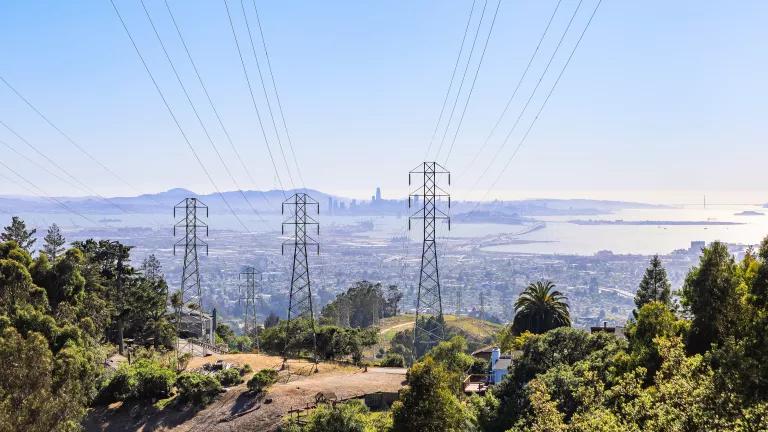Hoorah! States Pick Up the Federal Slack on Efficiency
A new scorecard from the American Council for an Energy-Efficient Economy (ACEEE) shows which states are leading on energy efficiency.

U.S. states are now more important than ever in advancing energy and transportation efficiency. With a lack of comprehensive federal action, smart policies that save energy, cut pollution, and lower energy bills must come from elsewhere.
A new scorecard from the American Council for an Energy-Efficient Economy (ACEEE) provides a comprehensive look at which states are leading on energy efficiency while the Trump administration continues to choose polluters and profits over the well-being of everyday Americans.
How did the states rank?
In its 13th annual 2019 State Energy Efficiency Scorecard, which looks at progress from 2018, ACEEE recognizes the efforts of longtime efficiency leaders Massachusetts (Rank #1) and California (Rank #2) — no surprises there. But the report also found exciting momentum in states where efficiency had previously been overlooked.
Maryland, the state named “most-improved,” showed progress in areas such as funding for public transit and maintaining strong building codes. But it can continue to progress by investing in efficiency programs for low-income communities to ensure, at minimum, they cut 1 percent of usage, saving money on their energy bills. After Massachusetts and California, Rhode Island, and Vermont tied for third place. New York, Connecticut, Maryland, Minnesota, Oregon, and Washington rounded out the top 10.
ACEEE: 2019 State Scorecard
You can also see there are a number of states that need to up their game and use efficiency for all it has to offer. Kentucky fell farthest in the scorecard's rankings to 38th (from 29th the previous year) primarily because of a 2018 decision that ended most of Kentucky Power's demand-side management programs and cut funding to other efficiency efforts. And 33rd-ranked Ohio passed a bill that saved aging, uneconomic power plants while effectively abandoning standards for energy efficiency and renewable energy. Wyoming ranked dead last on the scorecard, preceded by North Dakota, West Virginia, Louisiana, and South Dakota.
Why is energy efficiency important?
By helping people run their cars, homes, and businesses with less energy, efficiency is a cost-effective and indispensable tool in cutting pollution and meeting climate goals. In fact, efficiency alone can cut both U.S. energy use and greenhouse gas emissions in half over the next three decades, according to a separate ACEEE report.
Doing so would save $730 billion in U.S. energy costs by 2050 and create even more high-quality jobs in a sector that already employs 2.3 million people — twice as many American workers as the entire fossil fuel industry. Energy efficiency is indeed the superhero we must call on to stave off the climate emergency.

Policies that cut energy waste from our buildings, appliances, and cars generate meaningful savings for people through lower energy bills, which is appealing for state policymakers who want to ensure the well-being of their constituents. This is particularly important for the most vulnerable residents who often have to choose between life’s essentials (like food and medicine) and keeping the lights on and air conditioning running. Choices like these can have a dramatic impact on their quality of life and health. Thankfully, there are ways to prioritize these communities through smart policy design to ensure they are not left behind in the clean energy transition.
Who is doing what?
These states took on great tasks to help cut energy waste – which avoids fossil power plant and vehicle emissions that harm our health. For example:
1. Appliance Standards: State appliance standards have been big over the past year. In Hawaii, new minimum efficiency standards for computers, shower heads, and other products are projected to save residents up to $38 million on their utility bills by 2025. Washington, Colorado, and Nevada also adopted new laws expected to save consumers hundreds of millions of dollars (including provisions to keep the federal light bulb standards that the Department of Energy is trying, illegally, to undo), while bills have been filed in six others and the District of Columbia.

Joshua Sherurcij
2. Buildings: Several states have updated or strengthened energy code standards for both residential and commercial buildings, an important sector because buildings account for 75 percent of the electricity consumed in the U.S. Nebraska, which had not updated its building codes since 2009, now has the strongest codes in the Midwest. And Maryland, Massachusetts, Nebraska, Illinois, and Ohio have adopted the updated 2018 International Energy Conservation Code, which numerous other states are considering as well. This model building energy code ensures new homes are properly insulated with high-quality windows, and efficient energy-using systems.

3. Energy Efficiency Programs: New Jersey and New York, meanwhile, have strong programs to meet new utility energy-savings targets approved in 2018 as part of broader clean energy goals. New York aims to achieve 100 percent carbon-free electricity by 2040. New Jersey, which rejoined the Regional Greenhouse Gas Initiative this year, is aiming for 100 percent clean energy by 2050.
4. Clean Cars: States are also at the front line of another battle against Trump rollbacks—those aimed at clean cars. Earlier this year, Colorado became the 13th state, along with the District of Columbia, to adopt California's strict vehicle emissions standards, while nine states and D.C. have adopted its Zero Emission Vehicle standard, which sets minimum sales offerings for electric cars.

Dennis Schroeder/NREL, 26765
Not surprisingly, states with the strongest energy efficiency policies are also home to many of the cities that also rank highly on energy efficiency, such as Boston, San Francisco, Seattle, New York, and Los Angeles.
Together, these cities and states are showing the rest of the country how we can use the technologies already available today to build a smarter, more climate-friendly future. We don't have to wait. In fact, we can’t afford to so get to work!




